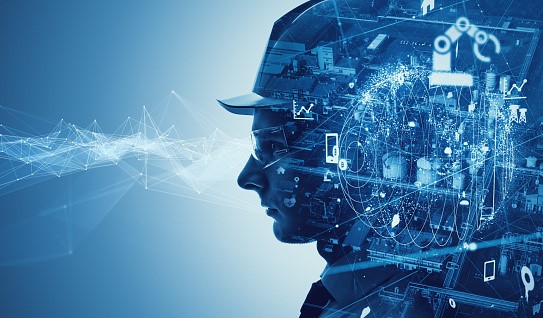By Dario Betti, Mobile Ecosystem Forum
I asked a few of the members of the Board of Directors at The Mobile Ecosystem Forum (MEF) to share their predictions for the mobile industry in 2023.
Prediction 1: Verifiable credentials will gain major traction
Andrew Bud, MEF Board Chair and Founder & CEO iProov
In 2023 we will see the use of Verifiable Credentials start to gain real traction. It’s the next generation of digital identity in which people keep their identity information in their own personal digital vault rather than it being managed by a third party.
RELATED: IoT, blockchain, fraud prevention, Conversational AI, new identity services will dominate 2023
So, for example, if a user visits a website, they can quickly and securely verify their identity and other key information, such as date of birth. The source of that information will not be on some central database but a set of cryptographically signed documents that the user controls either on their device or in a personal data vault.
And the important thing is that everything about those transactions will be standardised by brand new World Wide Web Consortium (W3C) standards. So, the key to this is not the technology but the W3C standards.
This will also help solve the dual problems of digital identity and personal authentication. These are two very different problems. In the case of digital identity, the biographical information is either true or it’s false and it all relates to a single individual who owns that digital identity.
But with personal authentication, we need to ensure that the person asserting that digital identity is entitled to own that set of information. So, one part is about assembling and authenticating the biographical details and personal information while the other is making sure that you are the physical human being to whom that information belongs.
As the technology converges around this issue, we will see some great solutions that will create a new layer of trust around verified credentials. This will benefit everyone, especially those in developing countries where bank accounts and documentation are less common. With trusted verified credentials, people in these regions will suddenly be able to access a whole range of services that were previously closed off to them. I think that’s going to be a real game-changer.
Prediction 2: IOT security standards are coming
Dawood Ghalaieny, MEF Board Member and CEO of Zariot
With the increasing number and complexity of Internet of Things (IoT) devices and the amount of sensitive data they collect and transmit, security is a critical concern. Ensuring the security of IoT systems is essential both for protecting the privacy and safety of individuals and organisations, as well as maintaining the integrity and reliability of critical infrastructure.
Unfortunately, the industry is failing to self-regulate when it comes to IoT security. Paying a premium to enforce IoT security or standards isn’t profitable, so there is no incentive for device manufacturers to worry. As a result, regulators are currently grappling with the issue and, I expect, will be publishing legislation in 2023.
This will make it more difficult for businesses to enter the IoT market and existing market players will need to be ready to develop stricter IoT security standards in response to this legislation. Rather than simply pushing new products out to market, manufacturers will need to address security issues by embedding measures such as encryption, authentication, access control, and vulnerability management into their IoT devices. So, prepare now!
Prediction 3: Conversational AI will grow rapidly
Waheed Adam, MEF Board Member and Executive Chairperson at iTouch
In the coming year, we will see a huge shift in Rich Communication Services (RCS), with many more enterprises having conversations with their customers rather than a one-way unilateral communication.
Brands are already slowly evolving into a more human-like entity. Even on social media, brands are almost emulating human behaviour to the world at large, which helps them embody their value systems. It also helps showcase their offerings as a human salesperson would, conversing with their end consumers in that same tonality.
With the rapid development in Conversational AI, powered by Conversational Process Automation (CPA), artificial intelligence can bridge the gap between the customer and process automation systems by automating both conversations and processes.
So, a business could launch a WhatsApp channel, showcase their items and then allow customers to converse with an online AI salesperson to ask questions and complete their purchase.
The power of Conversational AI can be combined with breakthrough innovative payment technology, such as Unified Payment Interface (UPI), to allow customers to make bank payments instantaneously via their mobile number.
So, not only can customers browse through a carousel of products and talk to a sales AI, but they can even select the items, put them in a cart, and actually make the online payment transaction through WhatsApp. There is no need to step out of the WhatsApp ecosystem onto an external website. Everything is available end-to-end.
This is a powerful process and adds a lot of value to OTT services like WhatsApp and its regional equivalents. It brings omnichannel processes into a single channel, joining up the user’s journey on their behalf.
Prediction 4: Blockchain will take centre stage
Anurag Aggarwal, MEF Board Member and VP Partnership and Alliances at Tanla
Blockchain is mainly known as the technology behind cryptocurrencies. However, the blockchain is actually a distributed public ledger of information and, as such, has vast potential applications beyond cryptocurrencies; healthcare and telecom have started using blockchain in a big way to help ensure the veracity and transparency of data.
Take, for example, a Cost per Acquisition (CPA) ecosystem, where the messages from the enterprise to the end user (and vice versa) go through a lot of hoops. Enterprises need to ensure complete traceability and visibility of the entire chain, but that poses certain challenges from both a security and data privacy perspective. So, by using blockchain, organisations can ensure a better flow of information, transparency of data, and end-to-end visibility of information across all levels.
In India, there is the distributed ledger technology regulation, which remains the world’s largest blockchain use case. Over 40 billion transactions every month go through the blockchain just because of this regulation in India.
So, with more regulation providing assurance for enterprise, blockchain will be increasingly used in a number of applications, such as managing end-to-end visibility of Call Detail Records (CDR) and enhancing data privacy.
Over the coming year, I expect we will see a lot more blockchain technologies out there but a bit less of a focus on digital currencies.
Prediction 5: Mobile operators offering new identity services
Jason Lunn, MEF Board Member and Global Connectivity, CPaaS at Cisco
Currently, mobile operators are really struggling to find ways to grow their revenues beyond traditional services: voice, SMS and data. Yet, one asset mobile operators can monetise is mobile identity.
Over the coming year, I expect we will see a breakout of systems whereby enterprise can query mobile operators to verify a customer’s age, address, credit status, etc. This information is known and verified by mobile operators to establish a contract, and it is tied to a unique number: a phone number. So, phone numbers could become the unique identifier to verify all this information.
It will be interesting to see how enterprise will take all those pieces of information and use it to formulate an opinion on a customer that can be used and monetised. It would make things much easier for customers – rather than filling out forms and completing Know Your Customer (KYC) data, they could simply link their mobile number. In turn, this would also be very helpful to businesses.
Prediction 6: A shift in digital transformation
Waheed Adam, MEF Board Member and Executive Chairperson at iTouch
Digital transformation accelerated rapidly in 2020 and 2021 due to the lockdowns and people working from home. There’s a joke which I often hear going around: who brought digital transformation into your organisation – your chief technology officer or COVID?
As a result of COVID, the telecom space saw this unexpected upward swing. However, I do think there has been some overinvestment because of all this growth and some of these excesses were shaved off as we emerged from lockdown in 2022.
In 2022, the US lost 10,000 tech jobs, with internet giants like Twitter, Meta and Amazon dramatically reducing their workforce. And by utilising more efficient ways of working, such as remote working and IoT, we will see more shifts in digital and workforce transformation in 2023.
However, it’s not all bad news: organisations are going all out to welcome this tech talent, which means the demand is still there. But I think that the demand for tech talent has become more equalised, with shifts from very large organisations to large and medium organisations and from the global West to developing countries. The overall trend is still towards more tech transformation, and we will just see a small correction in 2023, I expect.
Prediction 7: Reverse brain drain
Anurag Aggarwal, MEF Board Member and VP Partnership and Alliances at Tanla
The global West has been the dominant market for technology. But with the shift in digital transformation due to lockdown, the workforce is being redistributed, both between different organisations as well as geographic locations.
Take India. As a developing nation, India has often had to align foreign and economic policy with the West. But India has roughly a sixth of the global population. Prime Minister Modi has recognised this economic potential and, over the past three years, has established a very successful program to make India a self-contained economy.
As a result, I see 2023 bringing a reverse brain drain. Given the opportunities available, especially in the technology and the telecom space, a lot of that talent which moved out of India to the likes of US and UK is likely to move back over the coming years.
One effect of this will be that India will begin dominating the overall tech space and we will see more of Indians innovating solutions for India rather than for the global West.
Other countries may also follow suit. China and African nations are key areas to look out for. With their huge populations and greater access to technology and information, China and Africa could well become the tech powerhouses of the future.
Prediction 8: The challenge of globalisation
Jason Lunn, MEF Board Member and Global Connectivity, CPaaS at Cisco
To ensure the security and standards across globalised technology, we need an alignment of policies. Yet, with the growth in tech dominance in India, China and Africa, this alignment is shifting out of the hands of the global West.
The traditional idea of globalisation was free trade across the world. Yet, new technology is no longer an issue for the consumer market, it has become an issue of national security. In the telecoms industry the tech infrastructure is now national infrastructure, and in countries like the US and UK, governments have specifically limited technology developed in China due to concerns around trust and security.
So, the interconnected digital world is not aligning with the increasingly disconnected political world, and I think that will lead to some major challenges.
Over the next few years, governments are going to understand how important the players within the connectivity ecosystem are and how they play a key role within critical national infrastructure.
I expect this to lead to greater government subsidies to help telecoms businesses make their technology and security more robust and/or more regulation around security to help protect this critical national infrastructure.
Prediction 9: Preventing fraud will become essential
Anurag Aggarwal, MEF Board Member and VP Partnership and Alliances at Tanla
As the global technology market has grown, so too has a shadow economy of fake accounts. Robots set up fake accounts which are then served ads, draining advertising budget with no benefit. It’s also hard to estimate the size of this shadow economy – it could already be very big.
Telecoms operators play a key role in this economy. Take social media, for example. There are thousands of robots creating fake accounts, with lots of SMS being sent to activate and serve those fake accounts.
On the other side, mobile customers are receiving an unprecedented level of fraudulent phishing (or ‘smishing’ as we call it for SMS) messages with dangerous links.
To help combat these issues, a lot of organisations are currently working on more holistic, 360-degree solutions which would combine multiple data sources into a data pool to analyse and come out with intelligent identification of possible fraudulent transactions as soon as they’re triggered.
By using artificial intelligence and machine learning for fraud prevention, organisations will be able to identify patterns immediately and flag off possible situations of fraud and phishing/smishing. They can then intercept these fraudulent or spurious links, displaying a landing page where a user is notified that it’s possibly a fraudulent page, similar to the warnings users get in the likes of Google Chrome. They will also, then, be able to track and block these fraudulent accounts more quickly, making fraud much harder to commit.
Prediction 10: Mobile industry will need to become more sustainable
Jason Lunn, MEF Board Member and Global Connectivity, CPaaS at Cisco
Unfortunately, the mobile industry is a major contributor to global carbon emissions, with 3.5% of global CO2 emissions deriving from telecoms – that is double the amount from aviation. With the telecom industry growing very healthy, the amount of emissions will also grow, unless things change.
One thing that mobile operators can do to become more sustainable is to ensure that their code base is as efficient as possible. That could mean using more advanced programming languages—like Closure—that require fewer lines of code, reducing the amount of computer power that’s required.
This can be more difficult for older players in the market as they will have a lot of legacy code and servers to update. But as new players enter the market with more efficient technology, sustainability will suddenly become a competitive advantage. So, big players need to look into sustainability and efficiency now to prepare for that coming future.
We also need a clear standard and benchmark for measuring CO2 efficiencies. If we reduce the computer power needed, how much CO2 have we actually saved? This would make it easier for enterprise to prioritise efficiencies that lead to greater sustainability.
There is a lot of focus on sustainability and CO2 reduction at every level – from the UN to the US tax code. I think we will begin to see the fruits of that labour over the next year or so, with new legislation bringing clear benchmarks and responsibilities for the industry, and we need to be preparing for that change now.
 Author: Dario Betti is CEO of MEF (Mobile Ecosystem Forum) a global trade body established in 2000 and headquartered in the UK with members across the world. As the voice of the mobile ecosystem, it focuses on cross-industry best practices, anti-fraud and monetisation. The Forum provides its members with global and cross-sector platforms for networking, collaboration and advancing industry solutions.
Author: Dario Betti is CEO of MEF (Mobile Ecosystem Forum) a global trade body established in 2000 and headquartered in the UK with members across the world. As the voice of the mobile ecosystem, it focuses on cross-industry best practices, anti-fraud and monetisation. The Forum provides its members with global and cross-sector platforms for networking, collaboration and advancing industry solutions.
COVER IMAGE: Bdr Informática





























